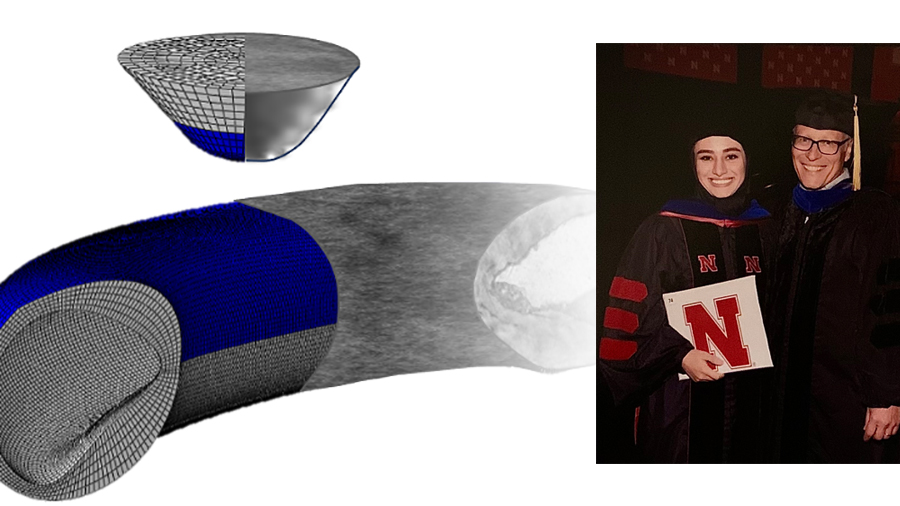Calendar Icon
Nov 03, 2023
Person Bust Icon
By Karl Vogel
![]() RSS
Submit a Story
RSS
Submit a Story

A new technique employed in a Nebraska Engineering laboratory has allowed a team of researchers from two universities to gain a greater understanding of how plant cells respond to environmental changes to control the flow of gases and water vapor.
In a paper published Sept. 11 in the National Academy of Science's journal PNAS Nexus, research led by Nebraska mechanical and materials engineering researchers Joseph Turner and Sedighe Keynia, in collaboration with Charles T. Anderson's group at Penn State University, was able to quantify the anisotropic mechanical properties and interior cell pressure of a cell using a novel approach.
In the Nano-engineering Research Core Facility (NERCF), the team studied Arabidopsis thaliana, a weed also known as thale cress that is in the mustard family. It is also the first plant to have its genome completely sequenced. But, Turner said, not much was known about its stomatal mechanical processes that control gas exchange, an important part of photosynthesis.
"It's been a big guess about the mechanical behavior (of the stomata)," said Turner, Robert W. Brightfelt Professor of Mechanical and Materials Engineering. "The most exciting part of this research is that for the first time, we were able to capture the stomatic process in-plane. That was something no one had measured before."
Keynia, who received her doctorate in mechanical engineering from Nebraska in August 2023, inserted the tip of a nanoindenter into the guard cells and was able to move it vertically and laterally. This, Turner said, allowed for taking measurements in all directions, which proved a major breakthrough in the research and set a foundation for comparing plants.
The results showed the stomatal process and allowed comparisons to the processes in grasses, many of which performed faster, Turner said.
A new three-year grant from the National Science Foundation will allow the team, led by Penn State researchers, to more closely examine the physical differences of stomata in different plants and quantify the reasons some perform with greater speed and/or efficiency.
This, Turner said, could lead to greater benefits.
"Some are much more responsive, and we don't know whether that's because mechanical properties, the material is different, or if it's the plant's geometry," Turner said. "If we can drill down into the genetics, then we can potentially modify crops that would have more likelihood to survive in more complicated or difficult conditions."
The team will manipulate a grass species – Brachypodium distachyon, which is considered a relative to most major cereal grain species.
Unlike the Arabidopsis, which has only two guard cells that open and close the pore in its cells, most grasses have a four-celled stomatal complex – dumbbell-shaped guard cells flanked by round subsidiary cells. The guard cells open and close in a "seesaw" manner in response to changes in the plant's environment.
"These approaches will lead to computational models that will predict how stomatal function might be further optimized to enhance crop yields, water-use efficiency and carbon drawdown," Turner said. "That means, possibly, more food and water for all living things and less of an impact on the planet."
Submit a Story
